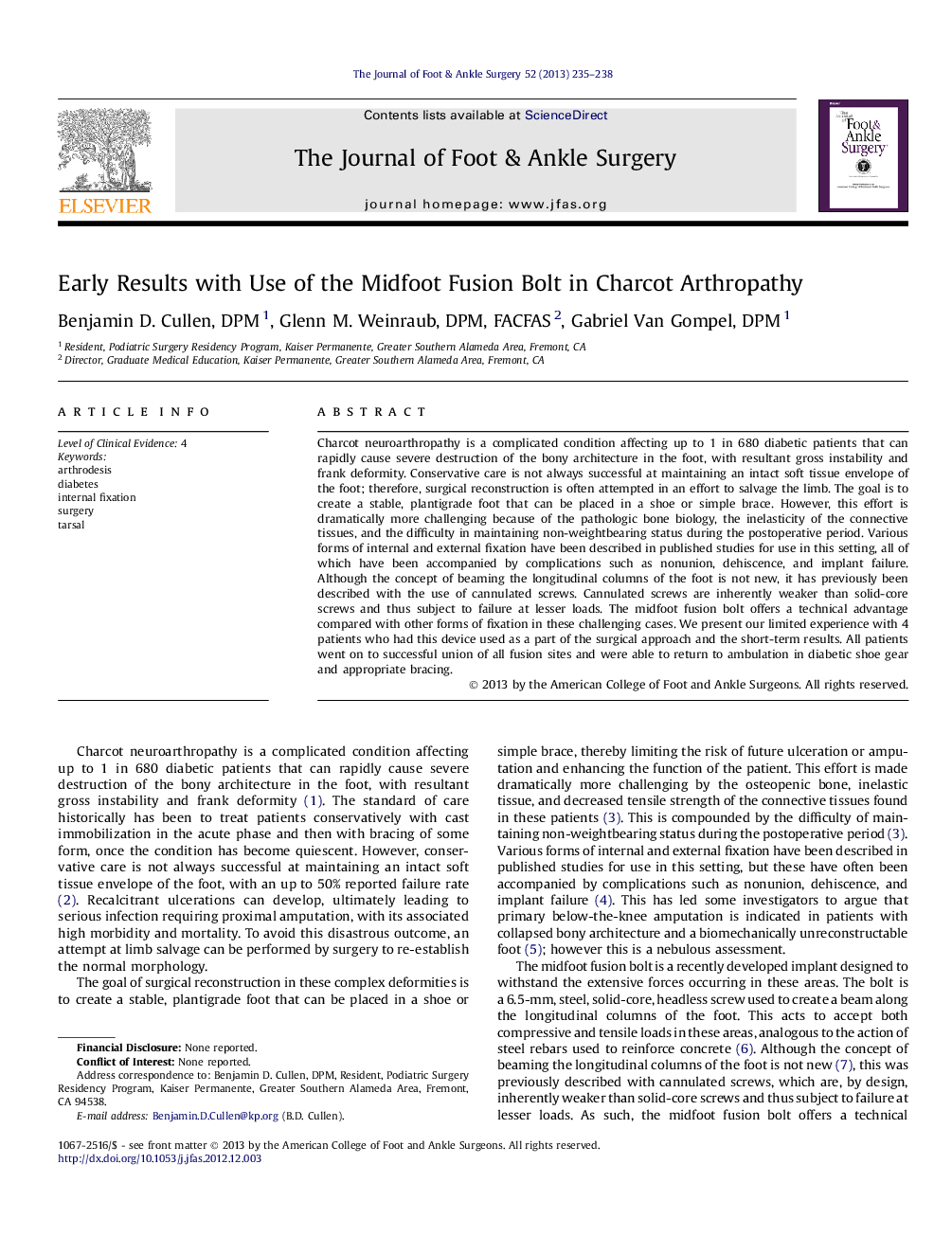| Article ID | Journal | Published Year | Pages | File Type |
|---|---|---|---|---|
| 2713186 | The Journal of Foot and Ankle Surgery | 2013 | 4 Pages |
Charcot neuroarthropathy is a complicated condition affecting up to 1 in 680 diabetic patients that can rapidly cause severe destruction of the bony architecture in the foot, with resultant gross instability and frank deformity. Conservative care is not always successful at maintaining an intact soft tissue envelope of the foot; therefore, surgical reconstruction is often attempted in an effort to salvage the limb. The goal is to create a stable, plantigrade foot that can be placed in a shoe or simple brace. However, this effort is dramatically more challenging because of the pathologic bone biology, the inelasticity of the connective tissues, and the difficulty in maintaining non-weightbearing status during the postoperative period. Various forms of internal and external fixation have been described in published studies for use in this setting, all of which have been accompanied by complications such as nonunion, dehiscence, and implant failure. Although the concept of beaming the longitudinal columns of the foot is not new, it has previously been described with the use of cannulated screws. Cannulated screws are inherently weaker than solid-core screws and thus subject to failure at lesser loads. The midfoot fusion bolt offers a technical advantage compared with other forms of fixation in these challenging cases. We present our limited experience with 4 patients who had this device used as a part of the surgical approach and the short-term results. All patients went on to successful union of all fusion sites and were able to return to ambulation in diabetic shoe gear and appropriate bracing.
